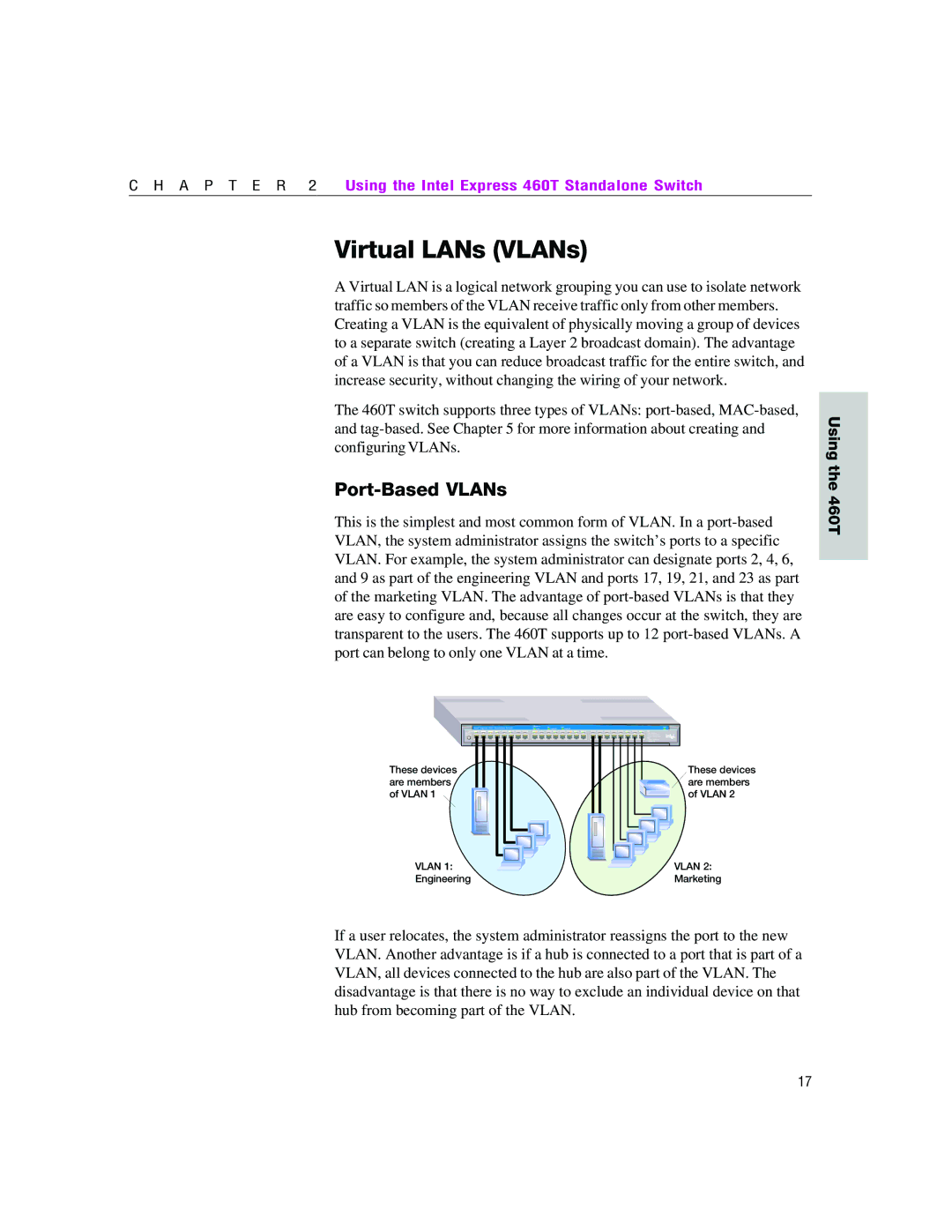
C H A P T E R 2 | Using the Intel Express 460T Standalone Switch |
Virtual LANs (VLANs)
A Virtual LAN is a logical network grouping you can use to isolate network traffic so members of the VLAN receive traffic only from other members. Creating a VLAN is the equivalent of physically moving a group of devices to a separate switch (creating a Layer 2 broadcast domain). The advantage of a VLAN is that you can reduce broadcast traffic for the entire switch, and increase security, without changing the wiring of your network.
The 460T switch supports three types of VLANs:
Port-Based VLANs
This is the simplest and most common form of VLAN. In a
Using the 460T
Module A
Intel Express 460T Standalone Switch
These devices are members of VLAN 1
VLAN 1:
Engineering
These devices are members of VLAN 2
VLAN 2:
Marketing
If a user relocates, the system administrator reassigns the port to the new VLAN. Another advantage is if a hub is connected to a port that is part of a VLAN, all devices connected to the hub are also part of the VLAN. The disadvantage is that there is no way to exclude an individual device on that hub from becoming part of the VLAN.
17
